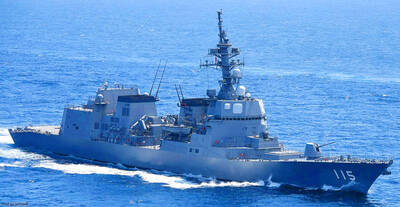To the list of great copywriters in advertising, add an unlikely name: Gary Gilmore.
Gilmore, the notorious spree-killer, uttered the words “Let’s do it” just before a firing squad executed him in Utah in 1977. Years later, the phrase became the inspiration for Nike’s “Just Do It” campaign.
The episode might make you wonder about the genesis of some other offbeat ads over the years. Where does someone get the idea to write a jingle about Oscar Mayer wiener envy? And how exactly does one dream up a talking gecko selling car insurance?
The revelation about the “Just Do It” slogan is one of many fly-on-the-wall anecdotes that the boldface names of the advertising world share in a new documentary by the filmmaker Doug Pray, called Art & Copy, released in New York on Friday.
The film takes some of advertising campaigns that are most indelibly seared into the American consciousness — “Got Milk?,” “I [Heart] NY,” “I Want My MTV,” to name a few — and examines their path from ad slogans to pop culture glory.
In the film Liz Dolan, a former marketing chief at Nike, says that the origins of “Just Do It” were not widely known or acknowledged.
“That was not the version I heard when I arrived at Nike,” she said. “I’m sure they didn’t want anyone to really know.”
Dan Wieden, who first realized that a slight tweaking of Gilmore’s last words might make a good slogan for athletic gear, said the resonance of “Just Do It” was completely inadvertent and unforeseen.
“I like the ‘do it’ part of it,” Wieden, a co-founder of Wieden+Kennedy, said in the film, recalling the moment it dawned on him to use the phrase. “None of us really paid that much attention. We thought, ‘Yeah. That’d work,’” he said. “People started reading things into it much more than sport.”
Art & Copy not only examines how seminal campaigns were born, but in the case of “Got Milk” and others, how they almost died premature deaths. Jeff Goodby and Rich Silverstein of Goodby Silverstein & Partners, the brains behind the milk ads and the Budweiser frogs, explain how both of those concepts almost never saw the light of day.
In the case of the “Got Milk?” concept, people at Goodby, Silverstein thought it was lazy, not to mention grammatically incorrect.
“It’s clunky. It’s not even English,” recalls Silverstein in the film, expressing his initial distaste for the idea.
He later gleefully adds: “It worked!”
Goodby tells how marketers at Anheuser Busch were ready to kill the frog campaign until August Busch III spoke up and said: “Those lizards are really funny.”
The transcendent Wendy’s “Where’s the Beef?” ads were also initially written off and nearly killed a week before they were set to go on the air, says Cliff Freeman, the slogan’s creator.
Pray, the film’s director, said part of his reason for doing the film was to shed light on the people behind ads that — for good or ill — have left a mark on US culture.
“Whether we like it or not, they have shaped our culture to a huge degree. And nobody knows where they’re coming from,” Pray, a documentarian who has also directed commercials, said in a recent interview. “We know the captains of industry. We know the heads of GM. But somehow that’s not true with advertising.”
Shows like AMC’s Mad Men and movies like The Hucksters are probably the closest most Americans have in the way of exposure to advertising executives. Some of the subjects interviewed or examined in Pray’s film — William Bernbach, George Lois, Mary Wells Lawrence — are the original mad men and women who shaped the era the television show depicts.
The characters in Pray’s film, however, are a far cry from the martini-swilling hedonists portrayed on AMC.
“I don’t think anyone could confuse me with those guys on the ‘Mad Men’ show,” Lois said recently, using a more colorful word to describe the characters.
The advertising world in New York in the 1960s, he said, “was intelligent. It was sharp. It was irascible. It was thrilling. It was cultural provocatism.”
Art & Copy, Lois added, is a nostalgic look back to a time when advertising had more cultural significance. “Back then there was this driving need, this passion. It was like a crusade. Everybody knew something important was happening. We were changing the culture of America.”
Pray said that the true believer, change-the-world outlook that Lois and others espoused about advertising initially escaped him.
“I never really looked at it like that. I always saw it as just commerce,” he said.
But by examining how resonant ads were made and seeing firsthand their cultural impact, Pray said he could appreciate them as more than just a way to move merchandise.
“There’s a beauty to things like “Got Milk?” or “Just Do It” or “Where’s the Beef?” — this incredibly simple writing that seems to kind of say more,” he said. “They seem to work on some kind of a different level that has nothing to do with the product.”

A Chinese freighter that allegedly snapped an undersea cable linking Taiwan proper to Penghu County is suspected of being owned by a Chinese state-run company and had docked at the ports of Kaohsiung and Keelung for three months using different names. On Tuesday last week, the Togo-flagged freighter Hong Tai 58 (宏泰58號) and its Chinese crew were detained after the Taipei-Penghu No. 3 submarine cable was severed. When the Coast Guard Administration (CGA) first attempted to detain the ship on grounds of possible sabotage, its crew said the ship’s name was Hong Tai 168, although the Automatic Identification System (AIS)

An Akizuki-class destroyer last month made the first-ever solo transit of a Japan Maritime Self-Defense Force ship through the Taiwan Strait, Japanese government officials with knowledge of the matter said yesterday. The JS Akizuki carried out a north-to-south transit through the Taiwan Strait on Feb. 5 as it sailed to the South China Sea to participate in a joint exercise with US, Australian and Philippine forces that day. The Japanese destroyer JS Sazanami in September last year made the Japan Maritime Self-Defense Force’s first-ever transit through the Taiwan Strait, but it was joined by vessels from New Zealand and Australia,

CHANGE OF MIND: The Chinese crew at first showed a willingness to cooperate, but later regretted that when the ship arrived at the port and refused to enter Togolese Republic-registered Chinese freighter Hong Tai (宏泰號) and its crew have been detained on suspicion of deliberately damaging a submarine cable connecting Taiwan proper and Penghu County, the Coast Guard Administration said in a statement yesterday. The case would be subject to a “national security-level investigation” by the Tainan District Prosecutors’ Office, it added. The administration said that it had been monitoring the ship since 7:10pm on Saturday when it appeared to be loitering in waters about 6 nautical miles (11km) northwest of Tainan’s Chiang Chun Fishing Port, adding that the ship’s location was about 0.5 nautical miles north of the No.

COORDINATION, ASSURANCE: Separately, representatives reintroduced a bill that asks the state department to review guidelines on how the US engages with Taiwan US senators on Tuesday introduced the Taiwan travel and tourism coordination act, which they said would bolster bilateral travel and cooperation. The bill, proposed by US senators Marsha Blackburn and Brian Schatz, seeks to establish “robust security screenings for those traveling to the US from Asia, open new markets for American industry, and strengthen the economic partnership between the US and Taiwan,” they said in a statement. “Travel and tourism play a crucial role in a nation’s economic security,” but Taiwan faces “pressure and coercion from the Chinese Communist Party [CCP]” in this sector, the statement said. As Taiwan is a “vital trading